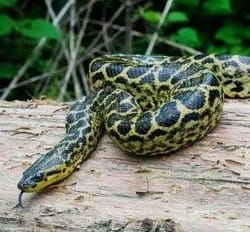Post by dinosauria101 on Jun 1, 2019 16:42:59 GMT 5
Giant Anteater - Myrmecophaga tridactyla
The Giant Anteater, Myrmecophaga tridactyla, is the largest species of anteater. It is the only species in the genus Myrmecophaga. It is found in Central and South America from Honduras to northern Argentina. Its fossil remains have been found as far north as northwestern Sonora, Mexico. It grows to a size of up to 7 feet (2.1 m) in length, with a 4-foot-long (1.2 m) head and torso, and a 3-foot-long (0.91 m) tail. Males weigh 33–41 kg (73–90 lb) and females weigh 27–39 kg (60–86 lb),making the giant anteater the largest extant species in its suborder. The head of the giant anteater, at 30 cm (12 in) long, is particularly elongated, even when compared to other anteaters. Despite its name, Myrmecophaga tridactyla, from the Greek meaning 'three-fingered ant eater', the anteater has five digits on each foot; however the middle three digits of the forefeet have elongated claws. These are extremely strong and are used to break open ant and termite mounds in order to feed, and provide effective defense against predators. The anteater walks on its knuckles in order to protect them, giving it a shuffling gait. Their wrist bones are adapted for knuckle-walking in much the same way as those of chimpanzees. The forefeet also have one other smaller claw, and the rear feet have five small claws.

Yellow Anaconda - Eunectes notaeus
Eunectes notaeus (common names: yellow anaconda, Paraguayan anaconda) is a nonvenomous boa species found in South America. No subspecies are currently recognized. The generic name Eunectes derives from Greek and means “good swimmer”; the Neo-Latin specific name notaeus derives from Greek νωταίος/nōtaios (poetic form of Greek νωτιαίος/nōtiaios), here meaning “dorsal.” In distinguishing his new species Eunectes notaeus from Eunectes murinus, Edward Drinker Cope stated: “Dorsal scales are larger and in fewer rows." Adults are not as large as the green anaconda, E. murinus, but nevertheless grow to an average of 3.3 to 4.4 m (11 to 14 ft) in length. They commonly weigh 25 to 35 kg (55 to 77 lb), though large specimens can weigh 40 to 55 kg (88 to 120 lb) or even more. The maximum size can certainly be larger, although confusion with its larger cousin may complicate matters. Female yellow anacondas have reportedly been measured up to 4.6 m (15 ft). Females are larger than males. The color pattern consists of a yellow, golden-tan or greenish-yellow ground color overlaid with a series of black or dark brown saddles, blotches, spots and streaks. This species prefers mostly aquatic habitats, including swamps, marshes, and brush-covered banks of slow-moving rivers and streams.

Credit to Wikipedia
The Giant Anteater, Myrmecophaga tridactyla, is the largest species of anteater. It is the only species in the genus Myrmecophaga. It is found in Central and South America from Honduras to northern Argentina. Its fossil remains have been found as far north as northwestern Sonora, Mexico. It grows to a size of up to 7 feet (2.1 m) in length, with a 4-foot-long (1.2 m) head and torso, and a 3-foot-long (0.91 m) tail. Males weigh 33–41 kg (73–90 lb) and females weigh 27–39 kg (60–86 lb),making the giant anteater the largest extant species in its suborder. The head of the giant anteater, at 30 cm (12 in) long, is particularly elongated, even when compared to other anteaters. Despite its name, Myrmecophaga tridactyla, from the Greek meaning 'three-fingered ant eater', the anteater has five digits on each foot; however the middle three digits of the forefeet have elongated claws. These are extremely strong and are used to break open ant and termite mounds in order to feed, and provide effective defense against predators. The anteater walks on its knuckles in order to protect them, giving it a shuffling gait. Their wrist bones are adapted for knuckle-walking in much the same way as those of chimpanzees. The forefeet also have one other smaller claw, and the rear feet have five small claws.

Yellow Anaconda - Eunectes notaeus
Eunectes notaeus (common names: yellow anaconda, Paraguayan anaconda) is a nonvenomous boa species found in South America. No subspecies are currently recognized. The generic name Eunectes derives from Greek and means “good swimmer”; the Neo-Latin specific name notaeus derives from Greek νωταίος/nōtaios (poetic form of Greek νωτιαίος/nōtiaios), here meaning “dorsal.” In distinguishing his new species Eunectes notaeus from Eunectes murinus, Edward Drinker Cope stated: “Dorsal scales are larger and in fewer rows." Adults are not as large as the green anaconda, E. murinus, but nevertheless grow to an average of 3.3 to 4.4 m (11 to 14 ft) in length. They commonly weigh 25 to 35 kg (55 to 77 lb), though large specimens can weigh 40 to 55 kg (88 to 120 lb) or even more. The maximum size can certainly be larger, although confusion with its larger cousin may complicate matters. Female yellow anacondas have reportedly been measured up to 4.6 m (15 ft). Females are larger than males. The color pattern consists of a yellow, golden-tan or greenish-yellow ground color overlaid with a series of black or dark brown saddles, blotches, spots and streaks. This species prefers mostly aquatic habitats, including swamps, marshes, and brush-covered banks of slow-moving rivers and streams.

Credit to Wikipedia




